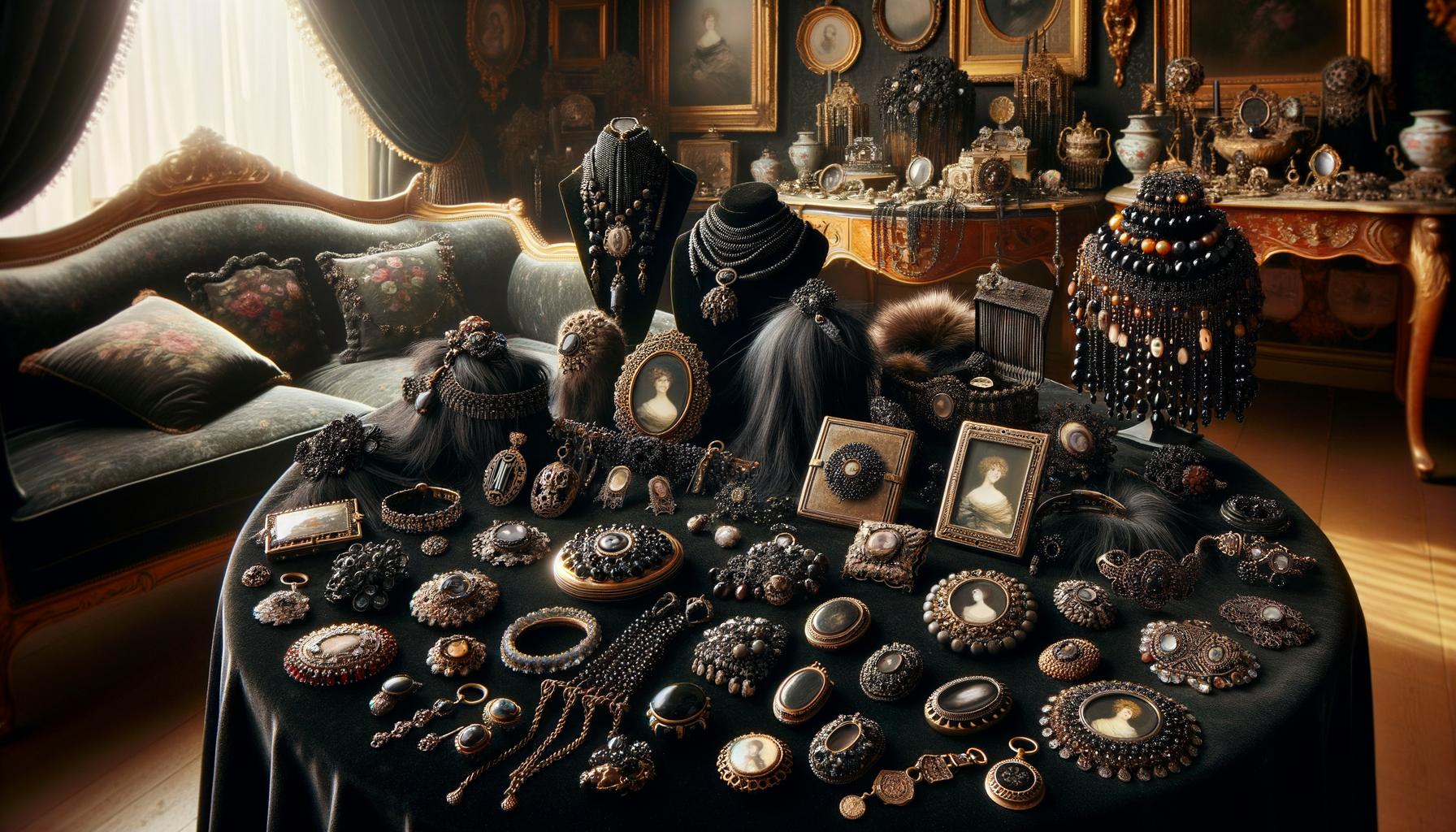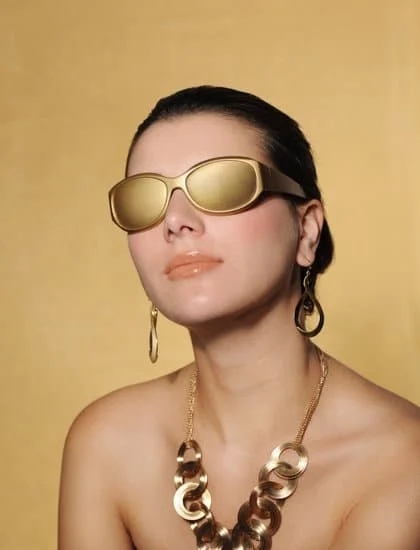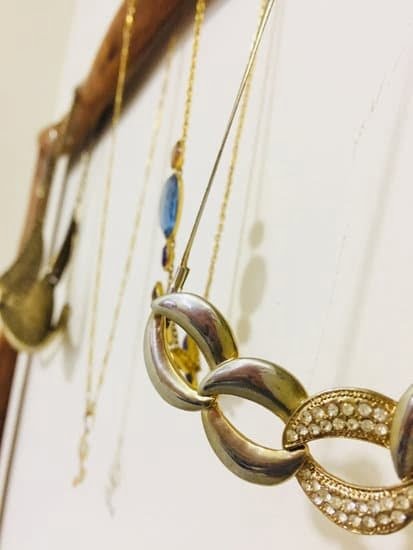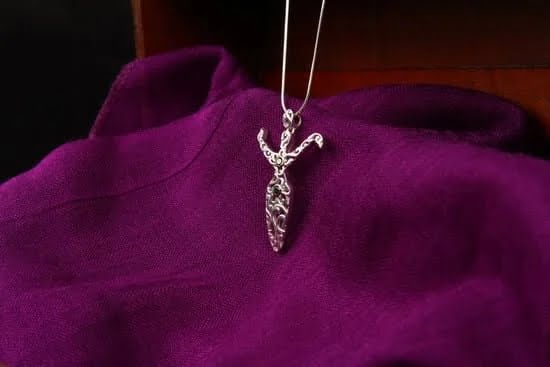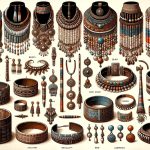Mourning jewelry: Victorian traditions of remembrance reflect a poignant and culturally rich era in which grief was intricately entwined with personal adornment. This unique type of jewelry, often enigmatic and hauntingly beautiful, served as tangible expressions of loss while offering solace to the bereaved. Steeped in history and symbolism, mourning jewelry played a crucial role in Victorian society, where customs around death and memory were rigidly defined yet deeply personal.
During the Victorian era, mourning practices were not just acts of honor but were essential societal rituals. Mourning jewelry emerged as one such practice, encapsulating grief in wearable art forms that preserved the memory of loved ones. The pieces ranged from simple memento mori-reminders of mortality-to elaborate works incorporating miniature portraits or locks of the deceased’s hair. Each item was crafted to maintain an emotional connection to those who had passed, seamlessly blending aesthetics with profound sentimentality.
This blog post dives into the multifaceted world of Victorian mourning jewelry, exploring its historical context, materials, designs, and its emblematic significance. By examining these intricate relics from a bygone age, we aim to shed light on their enduring legacy and offer insights into why they continue to captivate collectors and historians today.
Whether you’re new to this subject or an avid enthusiast, join us as we unravel the layers of meaning woven into each delicate piece of mourning jewelry.
Historical Context
Life in the Victorian Era and Its Cultural Norms
The Victorian era, spanning from 1837 to 1901 during Queen Victoria’s reign, was a period marked by strict social structures and cultural norms. Life during this time was heavily influenced by notions of propriety, etiquette, and tradition.
In both public and private spheres, how one conducted themselves was of utmost importance, particularly when it came to mourning. Victorians placed great emphasis on outward expressions of grief, viewing mourning as not just an emotional process but a social obligation deeply rooted in respect for the deceased.
Queen Victoria’s Influence on Mourning Customs
Queen Victoria herself had a profound impact on the era’s mourning practices following the death of her husband, Prince Albert, in 1861. Her extended period of mourning set a tone for society; she wore black attire for the remainder of her life and adhered strictly to mourning protocols.
This highly visible example reinforced elaborate grieving rituals across all social classes. Queen Victoria’s mourning period also ushered in an era where specific fashions in clothing and accessories-including mourning jewelry-became necessary symbols of one’s bereavement status.
Societal Attitudes Towards Death and Remembrance
The Victorian attitude towards death was markedly different from today’s often more private grieving processes. Death was a common part of everyday life due to higher mortality rates; therefore, societal customs surrounding death were much more pronounced. Mourning jewelry played a significant role in these customs by allowing individuals to publicly display their remembrance while also keeping loved ones close through tangible mementos.
These pieces often incorporated symbolic elements like hair from the deceased, engraved messages, or motifs representing eternal life and sorrow. The prevalence of mourning jewelry: Victorian traditions of remembrance underscored both personal grief and communal acknowledgment within this distinctive historical context.
Materials and Designs of Mourning Jewelry
The materials and designs of mourning jewelry during the Victorian era were carefully chosen to reflect the gravity of loss and remembrance. A predominant material used was jet, a fossilized wood that is dense, dark, and polished to a deep black sheen.
Jet was favored for its elegant appearance and somber color, aligning perfectly with the mourning attire dictated by strict societal norms. Alongside jet, other materials such as onyx, hair, enamel, and gutta-percha were frequently incorporated into these pieces.
Symbolism played a crucial role in the design of mourning jewelry. Common motifs included willow trees – representing sorrow and mourning; urns – symbolizing death and remembrance; angels – offering a sense of protection or heavenly guidance; and clasps of hands – signifying farewell or eternal bonds. These intricate designs served not only as personal tokens but also conveyed messages understood by those familiar with their symbolic language.
Popular types of mourning jewelry varied from brooches to rings, lockets, and bracelets. Brooches often featured poignant imagery or contained compartments for mementos such as hair or portraits of the deceased. Rings were sometimes adorned with small chips of diamond arranged in solemn patterns or inscribed with meaningful text.
Lockets held photos or locks of hair close to the heart, allowing wearers to carry a tangible piece of their loved one wherever they went. Bracelets similarly incorporated woven hairwork or enamel plaques depicting significant symbols.
Whether through ornate design or material selection, mourning jewelry encapsulated an individual’s grief while adhering to Victorian traditions of remembrance. Its emotional resonance extends beyond its historical context into today’s cultural fascination with antique items like Victorian-era mourning jewelry: victorian traditions of remembrance continue to inspire contemporary jewelers seeking to honor sentimental values through modern interpretations.
- Jet: Fossilized wood, dark sheen
- Onyx: Hard stone reflecting somber tones
- Hair: Used in elaborate weaves
- Enamel: Colored coating for detailed imagery
- Gutta-percha: Flexible rubber-like material
These materials combined with thoughtfully crafted designs created powerful commemorations for those left behind in the wake of loss during the Victorian era.
The Role of Hairwork in Mourning Jewelry
Significance of Using Hair in Victorian Mourning Pieces
Hairwork, the art of creating intricate designs using human hair, was a poignant and deeply personal element in mourning jewelry during the Victorian era. Hair from a deceased loved one was often incorporated into these pieces, symbolizing an everlasting bond that transcended death.
This practice was rooted in the belief that hair retained the essence of the individual long after other physical remnants had decomposed. As such, mourning jewelry infused with hair became cherished keepsakes for those left behind, providing a tangible connection to the departed.
Different Techniques and Styles of Hairwork
Victorian artisans developed numerous techniques to incorporate hair into mourning jewelry, each requiring meticulous attention to detail and expert craftsmanship. Some common methods included arranging strands of hair into intricate weaves or plaits, creating miniature landscapes or floral motifs under glass cabochons, or encasing locks of hair within brooches and lockets.
Additionally, wreaths made entirely out of braided or coiled hair were popular and could be adorned with precious stones or enamel accents. These varied styles showcased both the versatility of human hair as a medium and the skill of those who shaped it into beautiful commemorative art.
Examples of Hairwork Jewelry
Iconic examples of Victorian mourning jewelry featuring hairwork include brooches with delicate woven patterns visible beneath protective crystal coverings and rings with finely curled tendrils displayed on bed-like structures inside signet settings. Lockets often contained small plaits or curls meticulously organized around photographs or painted miniatures, adding layers of sentimentality to their purpose.
Even bracelets would comprise ‘hair chains’ created by braiding locks into sturdy yet graceful bands. These items provided mourners with a means to keep their loved ones close while adhering to social norms surrounding death and remembrance.
Mourning jewelry: Victorian traditions of remembrance encapsulated an age where grief was expressed through tangible artifacts like no other time before or since, making these beautiful yet somber artifacts highly valuable not just monetarily but emotionally as well.
Customization and Personalization in Mourning Jewelry
Personalization in mourning jewelry was a heartfelt way for Victorians to keep memories of their loved ones close. Engravings were one of the most common forms of customization. These personalized touches often included initials, names, or significant dates such as birth or death dates. Some pieces even featured affectionate inscriptions like “In Loving Memory” or “Forever in Our Hearts,” making each piece uniquely sentimental and providing comfort to those left behind.
Beyond engravings, Victorian mourning jewelry frequently incorporated portraits or miniature photographs of the deceased. Lockets were particularly popular for this purpose, allowing individuals to carry a small likeness of their lost loved one wherever they went. Other designs included cameos with finely crafted likenesses carved into materials such as shell or stone. These intimate inclusions made mourning jewelry profoundly personal and deeply meaningful.
Another fascinating aspect of personalization involved incorporating physical elements linked directly to the departed, creating an enduring connection through touch. One notable example is hairwork-a technique whereby the deceased’s hair was woven into intricate patterns and set into brooches, rings, or bracelets. This practice turned each piece into a tangible memento imbued with emotional significance. Such customized elements ensured that mourning jewelry: Victorian traditions of remembrance became both an art form and a vessel for undying affection.
- Engravings with initials, names, important dates
- Lockets containing portraits or photographs
- Hairwork using deceased’s hair as an integral part of the design
Ultimately, these personalized aspects endowed each item not just with aesthetic value but also immense emotional weight. It provided solace during times of grief and served as a constant reminder of the enduring bonds between the living and those who had passed away.
Etiquette and Rules Surrounding Mourning Jewelry
Social Rules and Expectations
In Victorian society, mourning jewelry was not merely an expression of personal grief but also adhered to strict social customs. Wearing these poignant pieces signified respect for the deceased and conformed to societal expectations. Specific types of mourning jewelry were reserved for various stages of mourning, with unwritten rules dictating what was appropriate.
For instance, during deep mourning-a period lasting from six months to a year-women would commonly wear simpler pieces such as jet brooches or rings. As one transitioned into half-mourning, more elaborate designs featuring onyx or hairwork could be introduced.
The Stages of Mourning and Corresponding Jewelry
The Victorian mourning process was divided into several stages, each dictating different styles and materials for mourning jewelry. The first stage, known as “deep mourning,” required the most austere adornments made primarily of black materials such as jet or enamel.
During this intense grieving period, any form of ornamentation was minimalistic to mirror the somber emotions felt by the mourners. Moving into “second mourning” allowed for slightly more decorative elements like seed pearls or black-dyed human hair, signifying a gradual return to normalcy while still honoring the departed.
Timeframes for Wearing Mourning Attire and Accessories
Victorian etiquette prescribed precise durations for wearing specific types of mourning attire and accessories. Typically, widows were expected to adhere to longer periods of full and half-mourning-sometimes up to two years-while other relatives might observe shorter durations depending on their relationship with the deceased.
Adherence to these timeframes conveyed respectability and ensured that one’s public display of grief met societal standards. These carefully prescribed periods determined everything from clothing color schemes to accessory choices, reinforcing the cultural significance of appearing appropriately in mourning regalia.
Mourning jewelry served as a tangible reminder of loss while simultaneously acting within the codified norms set by Victorian society. Despite its deeply personal nature, those who wore it had to navigate communal expectations skillfully. Through this lens, we gain insight into how intertwined grief practices were with daily life during that era-a vivid testament preserved in objects like brooches, rings, and lockets that remain evocative today.
Iconography and Symbolism in Mourning Jewelry
The iconography and symbolism in mourning jewelry are rich with meaning, offering deeper insights into the Victorian era’s attitudes towards death and remembrance. A prevalent feature in mourning jewelry: Victorian traditions of remembrance is the use of symbolic motifs that conveyed specific messages about loss and the hope for an afterlife.
For example, willow trees were often depicted as symbols of sorrow and mourning, their weeping branches representing tears. Similarly, urns symbolized the storage of ashes and were frequently utilized in these pieces to reflect reverence for the deceased.
In addition to natural elements, religious and mythological influences played significant roles in the design of mourning jewelry. Angels were commonly portrayed as guardians or messengers between the earthly realm and heaven, thus serving as comforting figures for those left behind. Similarly, doves often embodied peace and innocence, evoking a sense of calm amidst grief. The integration of these religious symbols provided a spiritual framework within which Victorians could process their loss.
| Symbol | Meaning |
|---|---|
| Willow Tree | Sorrow and Mourning |
| Urn | Reverence for the Deceased |
| Angel | Guardian/Heavenly Messenger |
| Dove | Peace and Innocence |
| Lily | Purity and Renewal |
| Forget-Me-Not | Eternal Love and Remembrance |
These various symbols combined created intricate narratives within each piece of mourning jewelry, allowing wearers to convey their emotional states subtly yet powerfully. Through these symbolic elements, mourning jewelry transcended its utilitarian function by becoming profound tokens imbued with personal memories and collective understandings of life, death, and continuity beyond grieving periods.
The Decline of Mourning Jewelry Practices
The later part of the 19th century witnessed significant shifts in societal attitudes toward death and mourning, which inherently influenced the practices surrounding mourning jewelry. As industrialization began to take root, there was a noticeable movement away from heavily ritualized mourning customs that defined the earlier Victorian era. This transition can be attributed to several factors such as advancing technology, changing cultural perspectives, and modernized views on life and death.
With industrialization came greater accessibility to new materials and faster manufacturing processes. Mass production techniques allowed for a broader range of affordable products, which minimized the exclusivity of items like mourning jewelry. Cheaper alternatives flooded the market, somewhat diluting the deeply personal and handcrafted nature that was once integral to those pieces. The somber elegance marked by jet, onyx, or hairwork began to wane in favor of simpler accessories produced en masse.
Moreover, societal modernization brought about changes in attitudes towards mourning rituals themselves. The Victorian era’s intense preoccupation with mortality gave way to more liberal viewpoints regarding how grief should be expressed and managed.
Mourning jewelry: Victorian traditions of remembrance transitioned from essential artifacts of personal loss to sentimental heirlooms relegated mainly to historical or collectable contexts. Increasing secularization also played a role; religious motifs that were once central symbols started losing their universal resonance as society diversified its spiritual beliefs.
These aforementioned dynamics heralded an era where public displays of grief through ornate adornments became less prominent. Instead, personal expression found new avenues beyond traditional mournful ornamentation, signaling not just a decline but an evolution in how people remembered their loved ones amidst changing times.
Collecting Mourning Jewelry Today
Identifying and authenticating antique mourning jewelry requires a keen eye for detail and an understanding of historical context. Key indicators include materials like jet, onyx, and hairwork, common in Victorian pieces. Symbols such as weeping willows, urns, and angels further authenticate items as genuine mourning jewelry.
Engravings or inscriptions, though sometimes worn with time, provide additional confirmation. Collectors should also be cautious of reproductions; studying hallmarking systems and familiarizing themselves with period-specific manufacturing techniques can substantially aid in verifying authenticity.
The preservation of vintage mourning jewelry demands specific care practices to maintain its condition and value over time. Pieces made from organic materials like hair or specific stones require careful handling and storage away from direct sunlight or moisture. Using soft cloths for cleaning and avoiding abrasive substances can prevent damage to intricate designs or delicate materials. By investing effort in proper maintenance, collectors ensure that these symbols of Victorian era mourning customs endure for future generations to appreciate.
| Tip | Details |
|---|---|
| Identify Materials | Look for typical Victorian materials such as jet, onyx, hairwork. |
| Check Symbols | Weeping willows, urns, angels indicate genuine mourning pieces. |
| Avoid Reproductions | Study hallmarking systems; understand period-specific techniques. |
| Proper Storage | Keep pieces away from sunlight or moisture; use soft cloths for cleaning. |
Contemporary Interpretations and Inspirations
In today’s era of personalization and unique expressions of grief, modern jewelry designers often look to Victorian mourning jewelry for inspiration. The intricate details, symbolic motifs, and emotional resonance found in these antique pieces speak to a timeless human experience-the need to remember and honor lost loved ones. Contemporary designs frequently incorporate elements such as black gemstones, lockets, or engraved messages that harken back to the original mourning jewelry: Victorian traditions of remembrance.
One notable trend is the integration of natural materials and traditional techniques into new designs. For instance, some artisans are reviving hairwork-a method where strands of hair from a deceased loved one are woven into intricate patterns-creating pieces that serve as deeply personal mementos. These updated versions might be more minimalist and streamlined than their Victorian counterparts but retain the intimate nature that makes them uniquely comforting.
Additionally, there is a growing interest in custom-made memorial pieces that reflect an individual’s life story or personality. Modern technology allows for detailed engraving, incorporating fingerprints or even digital portraits into the jewelry design. This high level of customization ensures each piece is not only beautiful but also rich with personal significance.
| Contemporary Trend | Description |
|---|---|
| Use of Black Gemstones | Incorporates onyx and jet as nods to traditional mourning colors. |
| Revival of Hairwork | Modern artisans create woven hair patterns in updated designs. |
| Customization Options | Engraving fingerprints or digital portraits for personalization. |
By looking back at the art form established through mourning jewelry: Victorian traditions of remembrance, contemporary jewelers create pieces that resonate with today’s market while preserving the essence of commemoration engrained in each design.
Conclusion
In summary, mourning jewelry from the Victorian era represents a deeply personal and historically rich tradition of remembrance. From Queen Victoria’s profound influence on mourning customs to the intricate designs and materials like jet, hairwork, and symbolic motifs, each piece of jewelry served not only as a memento but also as a heartfelt tribute to lost loved ones.
The sentimental value imbued in these timeless pieces reveals much about the era’s attitudes towards death, love, and memory, highlighting how Victorians sought to keep the presence of their departed alive through tangible relics.
The decline in traditional mourning practices towards the late Victorian period and beyond marked a shift in societal attitudes influenced by modernization and industrialization. Despite this evolution, contemporary jewelry designers continue to draw inspiration from these antique pieces.
Modern interpretations maintain the emotional core of mourning jewelry: victorian traditions of remembrance while adapting them for today’s context. This enduring fascination underscores how such symbols transcend time, catering to human needs that remain constant-mourning, memory-keeping, and healing through commemoration.
We invite readers to reflect on their relationship with mourning jewelry or share any experiences they may have with these poignant artifacts. Whether viewed through historical interest or personal connection, mourning jewelry offers a unique window into past customs and emotions that still resonate within modern hearts. By preserving and studying these pieces, we honor not just those who wore them but also the complex tapestry of human sentiments they so eloquently capture.
Frequently Asked Questions
What Is the Meaning of Mourning Jewelry in Victorian Times?
In Victorian times, mourning jewelry held great significance as it was worn to honor and remember the deceased. These pieces often included somber motifs such as skulls, coffins, and weeping willows.
Hair from the deceased was frequently incorporated into the design of rings, brooches, and lockets, creating a tangible connection between the wearer and their lost loved one. This type of jewelry served not only as a tribute but also as a means for expressing grief within the socially accepted norms of that era.
What Was the Mourning Etiquette in the Victorian Era?
Mourning etiquette in the Victorian era was highly structured and defined by strict rules that dictated how individuals should grieve over different periods. Women typically observed longer mourning periods than men, with widows often wearing black for up to two years or more.
The stages of mourning were marked by changes in clothing from deep black attire to muted shades like gray and mauve over time. Social interactions were restricted during this period; initially, grieving individuals would avoid social events completely before gradually reintroducing themselves into society through carefully regulated protocols.
How Old Is Mourning Jewelry?
The practice of wearing mourning jewelry dates back centuries but gained particular prominence during the 19th century under Queen Victoria’s reign. Queen Victoria herself popularized this type of jewelry after the death of her husband Prince Albert in 1861, when she began an extended period of mourning that greatly influenced societal customs in Britain and beyond.
However, examples of mourning jewelry exist from earlier historical periods as well, indicating that this form of expression has longstanding roots far preceding its Victorian height.
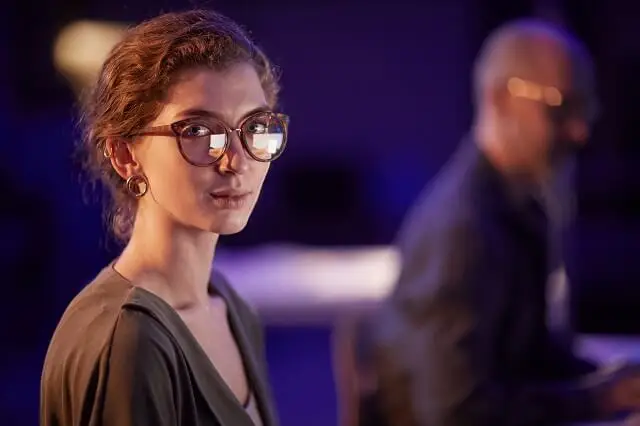
Welcome to my jewelry blog! My name is Sarah and I am the owner of this blog.
I love making jewelry and sharing my creations with others.
So whether you’re someone who loves wearing jewelry yourself or simply enjoys learning about it, be sure to check out my blog for insightful posts on everything related to this exciting topic!

